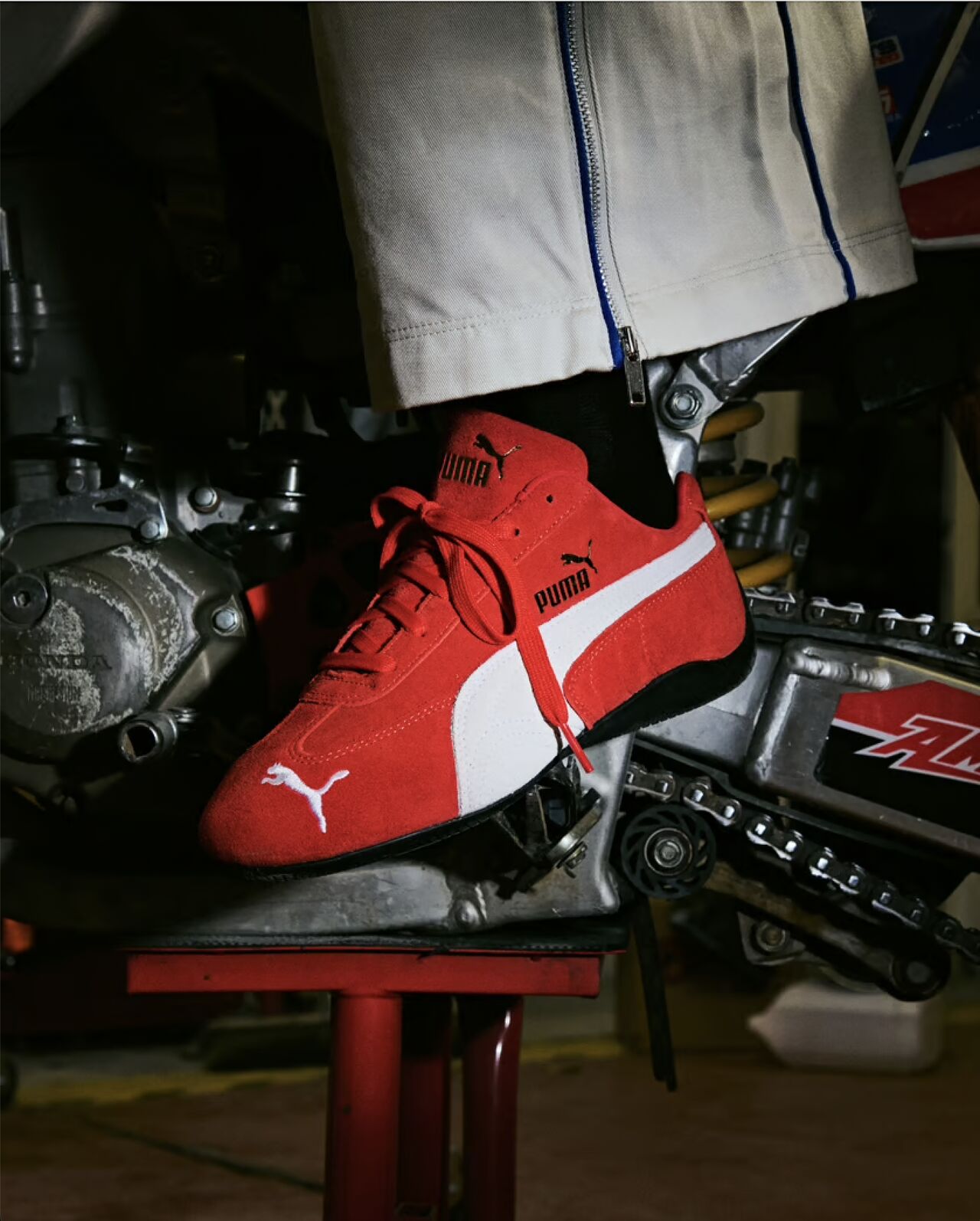PUMA’s latest results show modest growth (+2.5%) in a market where many players are flatlining or in decline. But the contrast is stark when you stack it against adidas’ 12% growth, stronger margins, and a cultural strategy powered by the Samba and Gazelle resurgence.
One of PUMA’s more intriguing plays was the re-release of the Speedcat. Originally launched in 1998 as a motorsport shoe, its return synced with the brand’s renewed Formula 1 focus—bolstered by names like A$AP Rocky. The Speedcat had all the makings of a cult comeback: rich racing heritage, Y2K energy, and a sleek, low-profile silhouette that fits neatly into the retro sneaker wave sweeping TikTok and the high street.
But here’s where the execution faltered. PUMA kept the Speedcat in the influencer seeding phase for too long. It lingered in fashion circles and social feeds for over a year before broader retail rollout. By then, the cultural momentum had begun to cool. The window to scale it into a breakout hit had closed.
Truth is, the Speedcat was always a moment, not a movement. It lacks the cross-tribe versatility of a Samba. But with sharper timing, it could’ve delivered more hype—and better returns.
This is the balancing act every brand faces when trying to build cultural capital. There’s a fine line between curating hype and missing the moment.
PUMA still has strong foundations. But to play at the top, it needs to move faster—with sharper instincts around timing, cultural signals, and execution.
Let me know what you think or what you’re seeing—and feel free to share this post if you found it interesting.
